



Rwanda, the land locked country in East Africa, just a few degrees from the Equator, called the ‘Land of a thousand hills’, is one of the most densely populated African countries that thanks to its varying altitudes, has a mixed terrain of savanna, rainforests, mountains and lakes. Though most people associate the country with the tragic genocide of 1994, Rwanda is today one of Africa's fastest growing economies, known for its cleanliness, and most famous for its mountain gorillas.
Rwanda has four national parks namely the Volcanoes National Park, Akagera National Park, Nyungwe National Park and Gishwati-Mukura National Park. Each of these parks has a distinct ecosystem and terrain and unique flora and fauna. The country is, however, most famous for its mountain gorillas at the Volcanoes National Park.
Trek to see the gentle giants at Volcanoes National Park
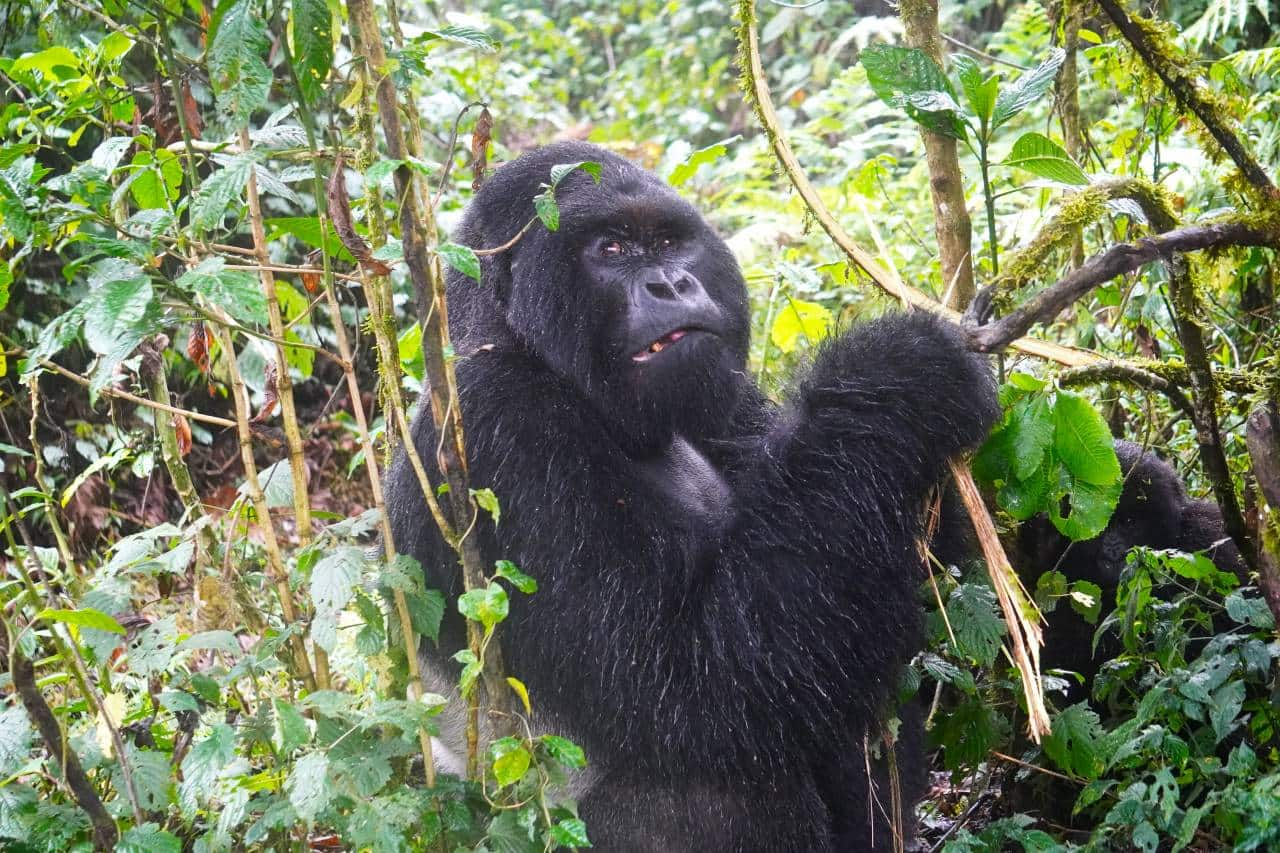 Gorilla at Volcanoes National Park. (Photo: Kalpana Sundar)
Gorilla at Volcanoes National Park. (Photo: Kalpana Sundar)
The Volcanoes National Park named after the dormant volcanoes steeped in lush rainforests that make up the Virunga Massif here, is Rwanda’s most famous national Park and also the most heavily patrolled park in the world and the oldest in Africa. In combination with adjoining parks in the neighbouring countries of Congo and Uganda , it serves as the world's only habitat of the endangered mountain gorillas. It takes about three hours to drive from Kigali to Kinigi, where the park headquarters can be found.
Most people head here to do the gorilla tracking, at a steep price of $1500 per person, the money going towards conservation and protection of the endangered gorillas. There are 12 habituated gorilla families that one is allowed to visit. Just 96 gorilla-trekking permits for groups of 8 people each, are issued each day of one hour each, to minimize the impact on the gorillas. Besides gorillas, it is also home to endangered golden monkeys and ancient caves. The park was the home and work place of the famous American zoologist, Dian Fossey who was killed in her line of duty protecting the mountain gorillas.
I geared up in safari colours, with gaiters and boots and a raincoat with a wooden stick carved with gorilla heads, and trekked in the rainforest, walking under overhanging branches and vines, with our guides and porters as well as rangers. Fortunately, we were in the easier group ( tourists are put into three groups depending on their fitness and interests) and after about an hour of walking through a muddy trail covered with leaf litter, with trees draped with vines and moss, we came across an enormous silverback from the Kwitonda family, sitting under a ficus tree. Not far away was a female with her small baby climbing on to a branch, and tumbling down. To be so close to these magnificent creatures and watch them go about their day, as if we don't exist was surreal.
Gorillas share as much as 98.3 per cent of their DNA with human beings, and it's so evident in the way they move, behave and even rebuke their children. A mother breastfed her baby, two young gorillas swung above her from the branches.
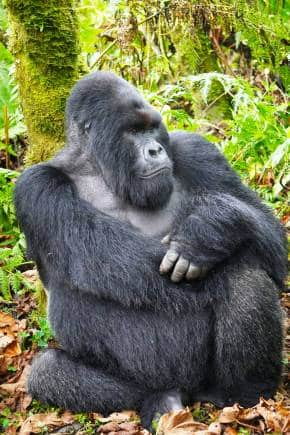 Gorillas share as much as 98.3 per cent of their DNA with human beings. (Photo: Kalpana Sunder)
Gorillas share as much as 98.3 per cent of their DNA with human beings. (Photo: Kalpana Sunder)
We stayed at the luxurious Virunga Resort and Spa, with a prolific bird life, delicious food, and large doubles with balconies that look out into the wilderness. Other than the gorilla trek, a must do is a visit to the Gorilla Guardians cultural village, also called the Iby’Iwacu Cultural Village, a non-profit community tourism with thatched huts, started by Edwin Sabuhoro who used to be a ranger and wanted to do something about poaching. The project employs ex- poachers who introduce tourists to local dances, music, archery, making the local brew (banana beer) and traditional medicine.
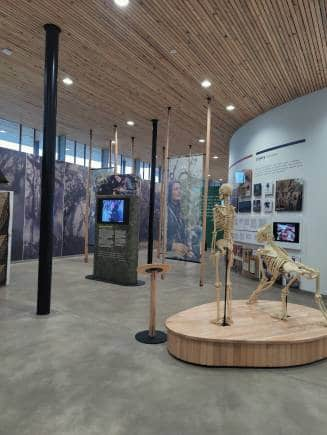 Museum at the Ellen DeGeneres Campus, Rwanda. (Photo: Kalpana Sunder)
Museum at the Ellen DeGeneres Campus, Rwanda. (Photo: Kalpana Sunder)
Drop by at the 12-acre Ellen De Generes Campus of the Dian Fossey Gorilla Fund, in Musanze, with a state of the art museum that focusses on the conservation of mountain gorillas, a fully equipped laboratory, and a 360-degree theater, as well as classrooms and a gift shop, that opened in 2022.
Where to stay: Top end options are One and only Gorilla’s Nest Lodge, Bisate, Singita’s Kwitonda Lodge and Virunga Lodge and Spa. For those on a budget, Mahabura and Le Palme are good options.
Take a safari drive to see the Big 5 at Akagera National Park
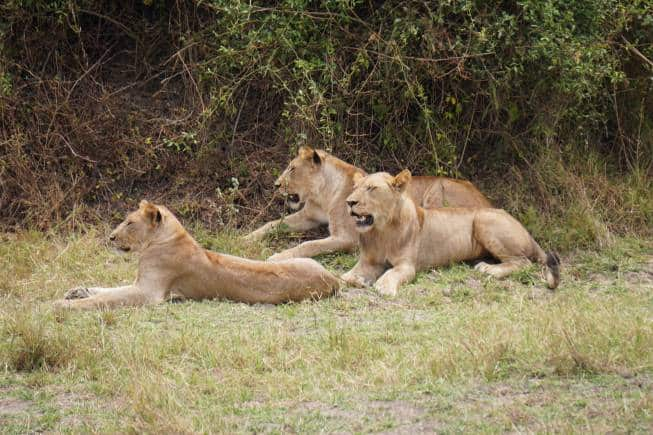 Rebuilding Akagera National Park included translocation of animals like lions and rhinos. (Photo: Kalpana Sunder)
Rebuilding Akagera National Park included translocation of animals like lions and rhinos. (Photo: Kalpana Sunder)
Rwanda's largest National Park is Akagera, sprawling over 1,000 sq. km, with its vast plains and sweeping highlands and extensive wetlands and papyrus lined swamps, in eastern Rwanda which borders Tanzania, is just a two hour drive from Kigali, the capital city.
Akagera is a conservation success story. The park was decimated after the genocide of 1994 and had an influx of refugees and poachers. Farmers had moved in with their cattle and lions had been driven to extinction. In 2010, the government partnered with African Parks, a non-profit conservation organisation that manages parks throughout the continent, to and rebuild Akagera which involved translocation of animals like lions and rhinos. In 2013, a park fence was erected to limit the devastating conflicts between people and wildlife. Today Akagera is brimming with wildlife - the Big 5 as well as a prolific bird life with more than 480 species. What is remarkable is also the park’s support for income-generating enterprises for local communities.
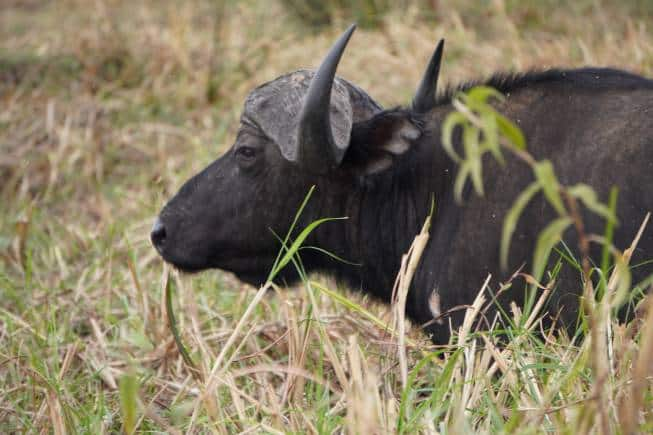 African or Cape Buffaloes. (Photo: Kalpana Sunder)
African or Cape Buffaloes. (Photo: Kalpana Sunder)
We took a boat safari on Lake Ihema followed by a jeep safari, driving through red earth roads and acacia trees, spotting lions, hippos, Masai giraffe, black rhinos, elephants, Cape Buffaloes, topi antelope, and a Goliath stork. I enjoyed the different terrains of papyrus swamps, hills, savannah grasslands and lakes. A behind-the-scenes tour of the park headquarters also gave us a glimpse of how the park runs efficiently from the canine unit to catch poachers, to helicopter surveillance and the control room that monitors animal and human movement.
Where to stay: Akagera has high end options like the Rusizi tented Camp and Magashi Tented Camp, mid range like the Akagera Game lodge, and also four campsites for the budget traveller.
Walk the canopy bridge at Nyungwe National Park, Rwanda’s latest UNESCO site
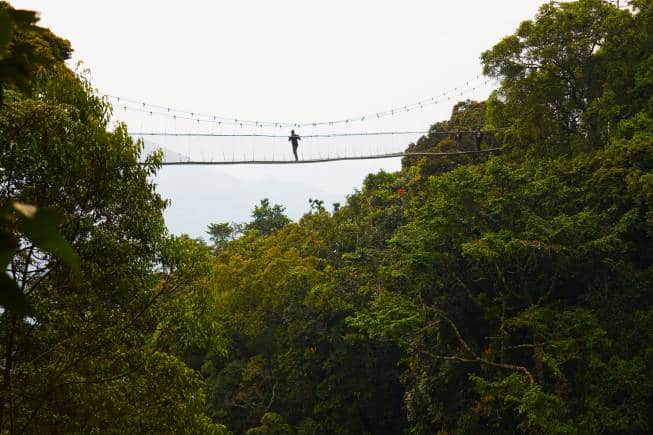 The canopy bridge at Nyungwe National Park, Rwanda’s latest UNESCO site. (Photo: Kalpana Sunder)
The canopy bridge at Nyungwe National Park, Rwanda’s latest UNESCO site. (Photo: Kalpana Sunder)
My favourite was the Nyungwe National park located in the Albertine Rift of the African Rift Valley in Rusizi in South Western Rwanda near the border with Congo and Burundi. It was established as a national park in 2004 and has one of the oldest rainforests in the continent along with extensive swamps, waterfalls and streams and a great biodiversity with over 200 species of trees and 100 species of orchids.
The region feeds two of the world’s largest rivers, the Nile and Congo. The Park offers a multitude of trails, with the chance to spot as many as 13 primates from chimpanzees to the L’Hoest’s monkey, which is endemic to the Albertine Rift.
A great experience was the trek on the Igishigishigi trail, past giant teak and mahogany trees and tree ferns and orchids, to the vertiginous Canopy Walkway which is a steel suspension bridge in three parts linked by platforms, over the tops of trees, draped in clouds, and a chance to spot golden monkeys or birds like blue turaco, babblers and sunbirds.
 At the tea estates. (Photo: Kalpana Sunder)
At the tea estates. (Photo: Kalpana Sunder)
Nyungwe is also bookended by tea estates that act as a buffer zone. I took a trek through the emerald green tea estates to the edge of the forest, to see a colony of black and white colobus monkeys that were active, on the branches of ficus trees. I learnt to pick the most tender tea leaves and understand the processing, at IVOMO a non profit that engages in community tourism.
Where to stay: A good place to stay in Nyungwe is the Kivu Marina Bay Hotel in Rusizi. If you want to splurge, stay at the luxurious One and only Nyungwe House tucked inside a tea garden.
Go chimpanzee tracking at Gishwati Mukura National Park
 Spotting colobus monkeys. (Photo: Kalpana Sunder)
Spotting colobus monkeys. (Photo: Kalpana Sunder)
The newest National park is the Gishwati Mukura National park that opened its doors in 2020, and is made up of two fragmented different rainforest tracts plus a buffer zone dotted with tea plantations, and is home to golden monkeys, chimpanzees and blue monkeys. Illegal mining and farming in the area has depleted the areas forests, they are now being restored along with community projects so that regeneration is long term. Eco-tourism, as well as the work of the Gishwati Forest Conservation Program has brought back this degraded land. The Park has more than 230 species from warblers to sunbirds and regal blue Turacos. Gishwati Forest have several hiking trails of varying difficulty.
Where to stay: Stay at the Lake Kivu Serena Hotel in Rubavu, situated on Lake Kivu, the largest lake in the country with a private beach.
Visas on arrival and direct flights on RwandAir and Ethiopian Airlines, have made Rwanda an attractive destination for Indians. Visit: www.visitrwanda.com
Discover the latest Business News, Sensex, and Nifty updates. Obtain Personal Finance insights, tax queries, and expert opinions on Moneycontrol or download the Moneycontrol App to stay updated!
Find the best of Al News in one place, specially curated for you every weekend.
Stay on top of the latest tech trends and biggest startup news.